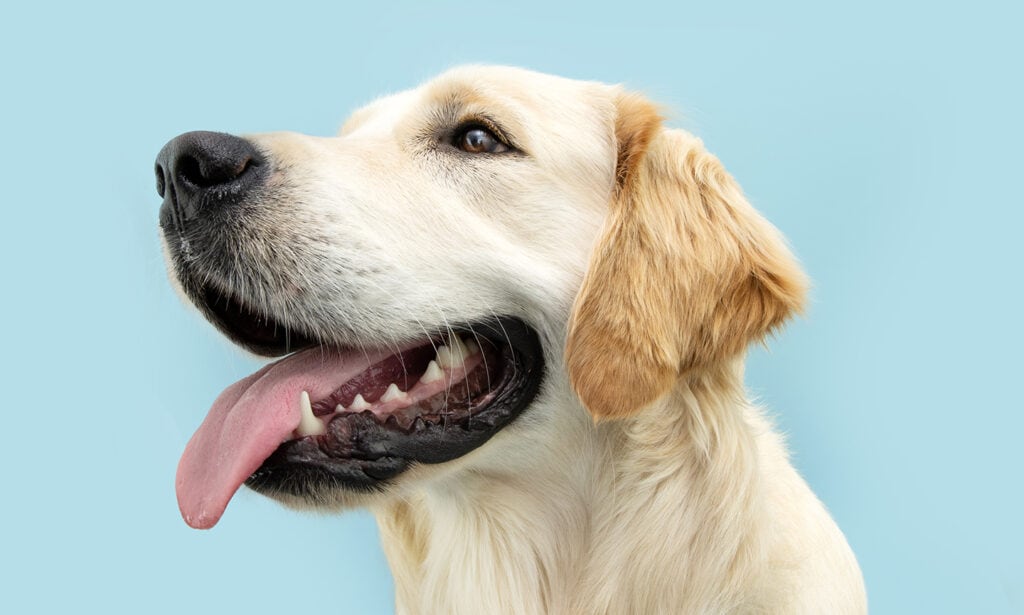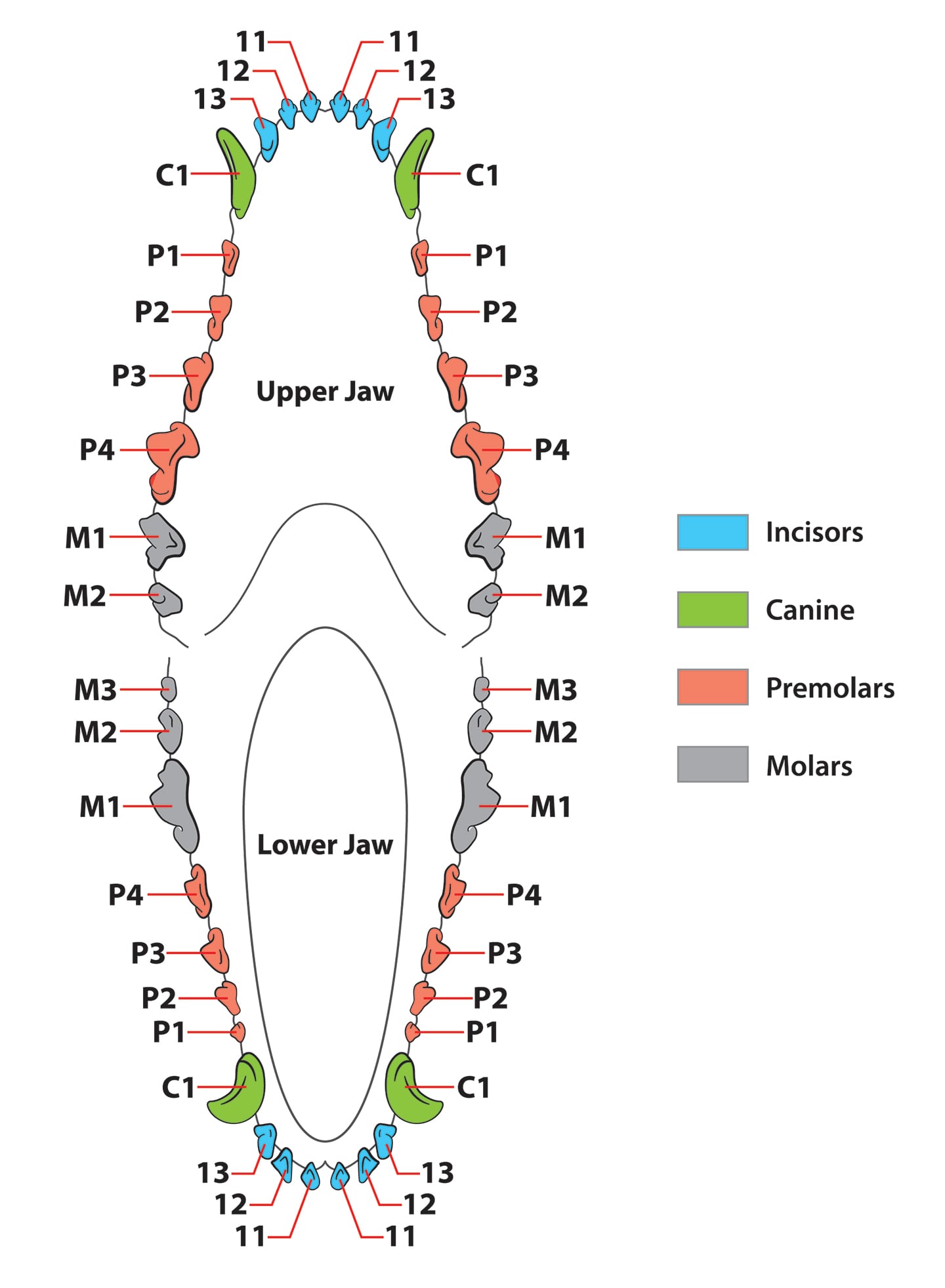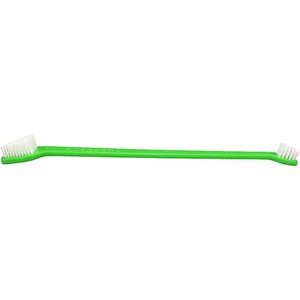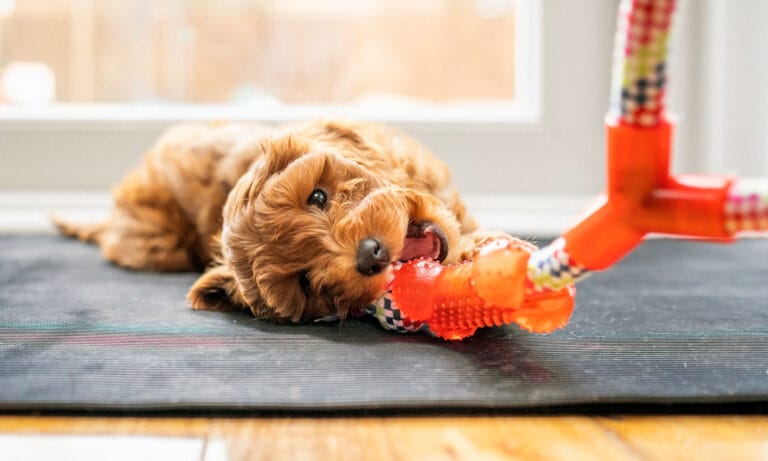Have you ever wondered how many teeth your dog has? Or perhaps you're curious about those tiny, sharp teeth that make up your puppy's playful grin—and can feel like mini daggers!
Just like with human teeth, keeping our canine companions’ teeth and gums healthy is incredibly important to their well-being. We spoke to vet experts about everything you need to know about dog teeth, including how many teeth dogs have, where the teeth are located, the function they serve, tips for top quality dental care and more.
Click to jump to each section:
How Many Teeth Do Adult Dogs Have?
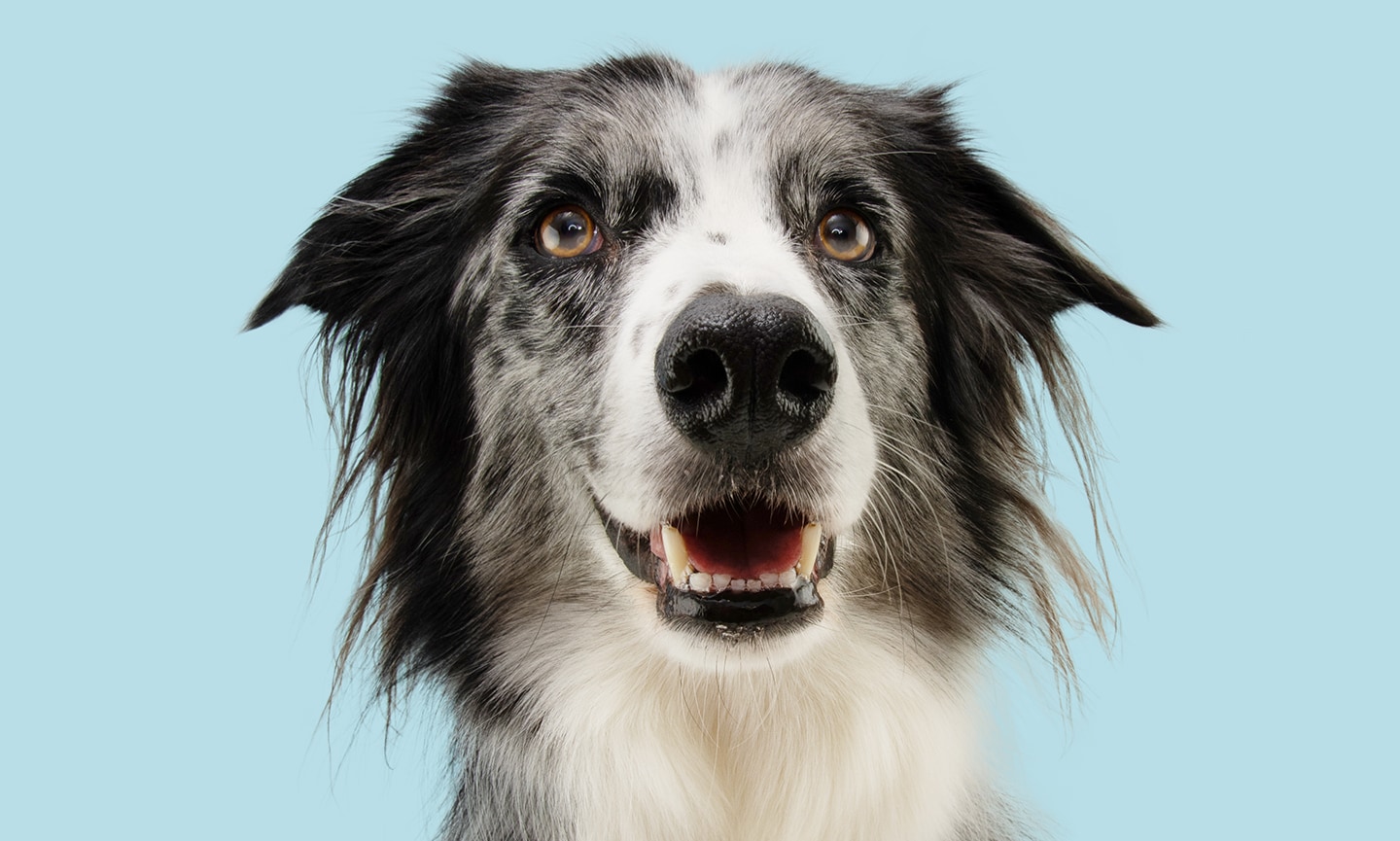
Dogs have 42 teeth: 20 on the top and 22 on the bottom. That’s 10 more teeth we humans have!
Chow Chows are the one exception. This breed has a total of 44 permanent teeth.
Dog Dental Chart
Types of Dog Teeth
Dogs have four types of teeth:
- Incisors: These teeth are located at the very front of your dog’s mouth. They erupt between 3 and 5 months of age.
- Canines: These teeth are located toward the front of your dog’s mouth. They resemble fangs and erupt between 4 and 6 months of age.
- Premolars: These teeth are located behind the canines and in front of the molars. They erupt between 4 and 7 months of age.
- Molars: These teeth are located in the very back of your dog’s mouth. They erupt between 5 and 7 months of age.
Incisors
6
6
Scraping and grooming
Canines
2
2
Scraping and gripping
Premolars
8
8
Grinding and chewing
Molars
4
6
Crushing and grinding
How Many Teeth Do Puppies Have?
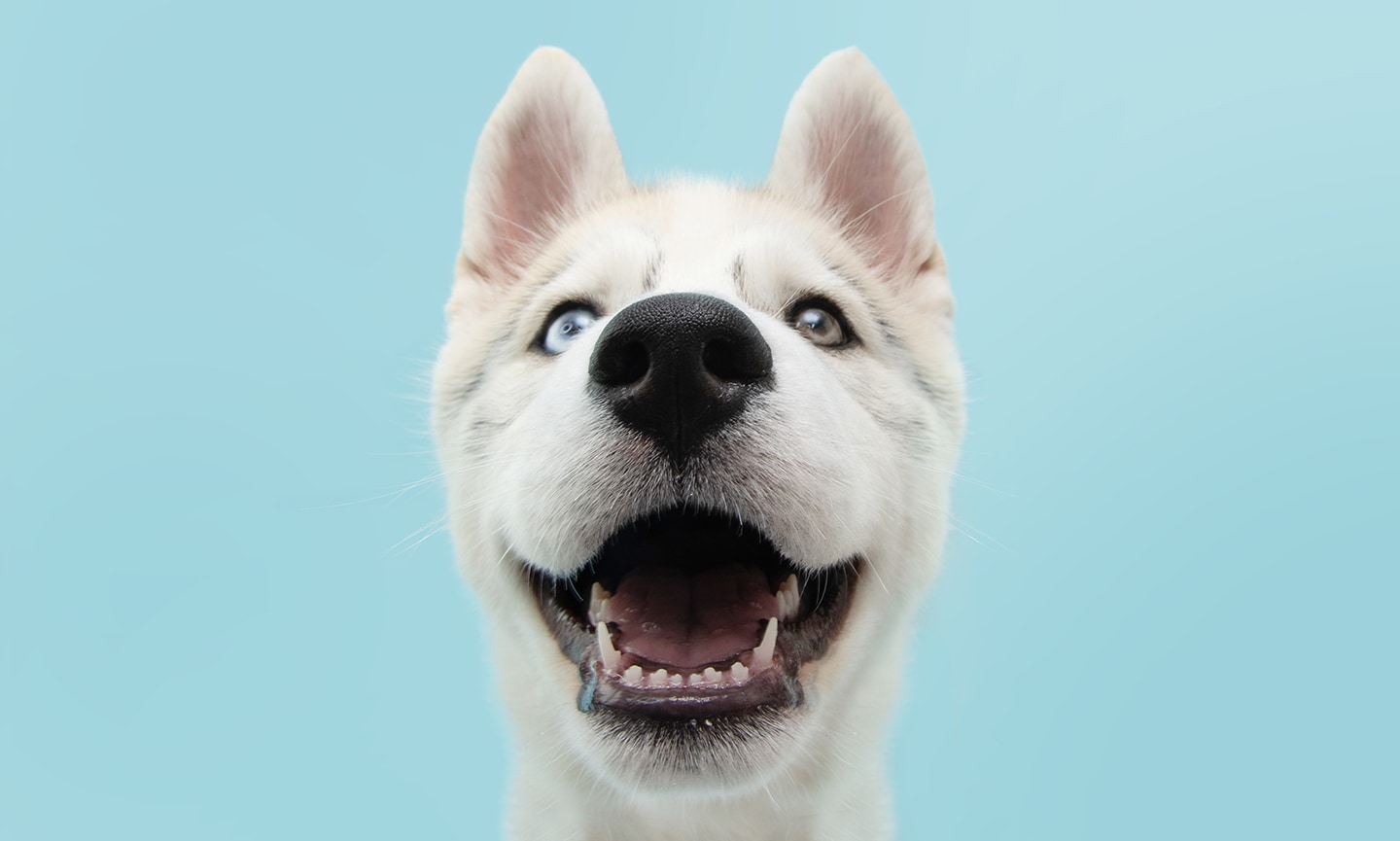
Canines
6
6
Tearing
Incisors
2
2
Scraping, nibbling and grooming
Premolars
6
6
Grinding and chewing
How Many Teeth Do Puppies Lose?
Puppies will lose all 28 of their baby teeth to make room for their new adult teeth. As adults, they'll grow 14 more teeth, for a total of 42 teeth.
However, occasionally something goes wrong and a baby tooth doesn’t fall out when it should. When puppies have baby teeth that fail to fall out on their own, vets refer to them as retained deciduous teeth or persistent teeth. These retained teeth can cause problems for your puppy’s mouth, including:
- Abnormal bite: This can lead to pain and difficulty when chewing.
- Overcrowding: This is caused when appropriate room isn’t left for the adult teeth. The overcrowding can cause plaque buildup, which can lead to gingivitis, tooth decay and other dental problems.
If you notice your puppy hasn’t lost a baby tooth by the time they should (around 12 weeks of age), check in with your vet to ensure it doesn’t need to be removed.
Do Dogs Lose Teeth?
Yes, just as we humans can lose our adult teeth, dogs can lose their permanent teeth, too.
“If your adult dog loses a tooth, it can be a sign of dental disease,” says Dr. Sara Ochoa, DVM, a veterinarian at Animal Hospital of West Monroe in West Monroe, Louisiana, and the co-founder of How To Pets.
How to Prevent Tooth Loss in Dogs
Conditions like periodontal disease and gingivitis can lead to tooth loss in dogs. As the saying goes, an ounce of prevention is worth a pound of cure. Do the following to help your dog retain their adult teeth:
Brush Your Dog’s Teeth Regularly
“Ideally, you should brush your pup’s teeth at least once a day,” Dr. Ochoa says, “but even doing it a few times a week can make a big difference.”
She recommends using a toothbrush and toothpaste made specifically for dogs, and says to remain patient and gentle.
Here are a few pet parent-recommended toothbrush and toothpaste options to help you care for your canine’s teeth:
Offer Your Dog Dental Chews
If your dog is resistant to brushing, you can also use dental chews or chew toys to help keep their pearly whites healthy, says Dr. Ochoa.
She suggests you look for dental chews that have the Veterinary Oral Health Council (VOHC) seal of approval, as they’re proven to be effective at reducing plaque and tartar buildup.
Feed Your Dog a Balanced Diet
A balanced diet is important to your dog’s dental health (and their overall health, too), so Dr. Ochoa recommends you select high-quality dog food. Your vet can help you determine the best option for your dog.
Additionally, Dr. Ochoa cautions pet parents against feeding their dogs sugary treats and table scraps, because they can lead to plaque buildup and additional canine dental issues.
Take Your Dog for Regular Dental Checkups
As is the case with humans, dogs need routine dental care. Take your four-legged friend to the vet for a dental exam and cleaning at least once per year. You’ll want to take them twice annually if they’re prone to periodontal disease.
Dr. Ochoa says that through checkups and dental cleanings, your vet can spot dental issues early, which can help your pup avoid more serious dental problems, including tooth loss.
Look for Signs of Dental Problems
Pay attention to your dog’s mouth and their behavior. If anything seems amiss, call the vet.
Dr. Ochoa explains the following signs of dental problems in dogs:
- Bad breath: Dog’s don’t always have the best breath, but Dr. Ochoa says “a strong and persistent bad smell coming from your dog’s mouth” could be a sign of trouble.
- Bleeding gums: While your dog’s gums can bleed during play or when eating rough food, bleeding gums can also be an indication of periodontal disease.
- Difficulty eating: Tooth pain can make it hard for your dog to eat, so if you notice changes in your dog’s eating behavior, be on the lookout for dental issues.
- Discolored teeth: If you notice yellow, brown or gray coloring on any of your dog’s teeth, or if you see tartar buildup (which forms near the gum line and often looks rough, hard and yellowish-brown in color), you’ll know your dog’s oral hygiene isn’t making the grade. These issues can lead to dental problems, including tooth loss.
- Excessive drooling: Drooling is normal, but too much of it can mean your dog is in pain. Excessive drooling can be a sign of many different troubles, including dental problems.
- Pawing at their mouth: Tooth or gum pain can cause your pooch to paw at their mouth or face, so if you notice your dog doing this frequently, don’t ignore it.
“If your dog’s teeth are loose or falling out, it’s a sign things are not good,” says Dr. Ochoa. Call your vet and schedule an appointment ASAP.
FAQs About Dog Teeth
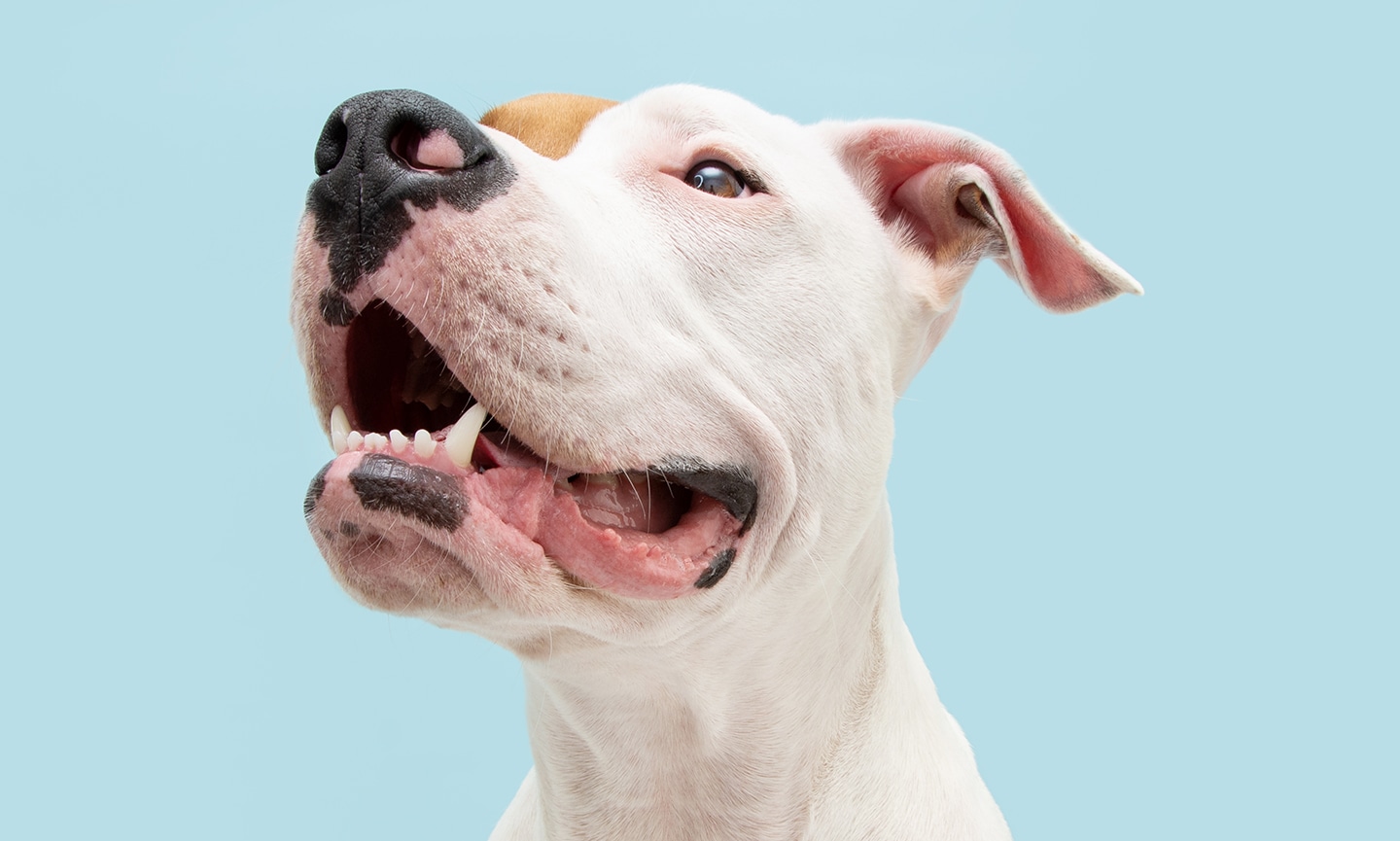
Q:
Do all dog breeds have 42 teeth?
Q:
What are the differences between puppy teeth and adult teeth?
A:There are a couple of differences between puppy teeth and adult teeth:
- Puppy teeth are temporary while adult teeth are permanent.
- Puppy teeth are smaller and sharper, while adult teeth are larger and flatter.
Q:
Are puppies born with teeth?
A:When puppies are born, they don’t have visible teeth. The teeth exist, but they’re below the gumline.
These teeth are called deciduous teeth—also referred to as milk teeth—and they begin to erupt when your puppy is 3-4 weeks old.
Q:
When do dogs get their adult teeth?
Q:
Does a dog have a wisdom tooth?
A:Dogs have wisdom teeth—sort of.
“Dogs do have third molars, which are commonly referred to as wisdom teeth in humans,” says Dr. Ochoa. “However, unlike in humans, these teeth don't cause any issues or require extraction in dogs.”
Many dogs never develop the third molars, and for dogs who do develop third molars, most don’t experience problems. Although it’s rare, “some dogs may experience discomfort or inflammation in their gums when their third molars emerge,” Dr. Ochoa says.
Q:
How long does it take for all of a dog's teeth to grow in?
A:The time it takes for a dog to develop a complete set of permanent teeth varies by breed. Dr. Ochoa breaks it down:
Small breed dogs (e.g., Chihuahuas and Toy Poodles):
- Deciduous teeth begin to fall out between 12 and 16 weeks of age.
- Full set of permanent teeth have come in by 6 to 7 months of age.
Medium breed dogs (e.g., Beagles and Cocker Spaniels):
- Deciduous teeth begin to fall out around 4 to 5 months of age.
- Full set of permanent teeth have come in by 7 to 8 months of age.
Large breed dogs (e.g., German Shepherds and Golden Retrievers)
- Deciduous teeth remain until 4 to 6 months of age, with adult teeth beginning to come in between 4 and 6 months of age.
- Full set of permanent teeth have come in by 12 to 16 months of age.
Q:
Do dog teeth grow back?
Q:
How many sets of teeth do dogs have?
More on caring for your dog's teeth:
Share:
